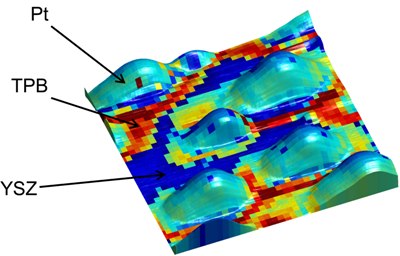A research team at the Department of Energy (DOE)’s Oak Ridge National Laboratory (ORNL) has employed a novel technology called electrochemical strain microscopy to investigate the reactions that restrict the extensive use of fuel cell technologies.
 Novel Microscopy Method reveals more about key reactions in fuel cells
Novel Microscopy Method reveals more about key reactions in fuel cells
The unique technology allows the researchers to study oxygen evolution/reduction reactions occurring in fuel cells, which would open the door for the development of enhanced materials and devices. The research team conducted the study at the Center for Nanophase Materials Sciences (CNMS) at ORNL.
Huge quantities of platinum were utilized as catalysts for the oxygen-reduction reaction that manipulates the efficacy and durability of the fuel cells. However, current electrochemical technologies are not capable to investigate the mechanism and the location of the reaction at the nano-level.
ORNL’s Sergei Kalinin stated that the mobile ions in the fuel cell materials act like a liquid. The materials with quicker mobile ions could serve as better fuel cell materials, he said. Electrochemical strain microscopy was able to capture this ion mobility, he added. Other electrochemical technologies are not able to investigate oxygen-reduction reactions as they are restricted to resolutions at the microscale, which is 10,000 times bigger than a nanoscale.
Kalinin further said there was a vast gap between basic science and applied science for energy systems such as batteries and fuel cells. The energy systems are highly complicated than the semiconductor industry where the link between fundamental science and application is well established, he added.